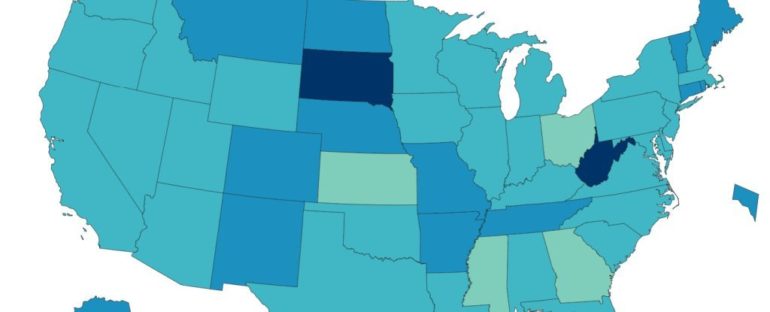The Centres for Disease Control and Prevention unveiled major updates to its vaccine tracking dashboard on Thursday, including an interactive map that shows how vaccine distribution and administration is going in every US state and territory.
Previously, the website tracked only two broad measurements of US COVID-19 vaccination efforts: doses distributed and doses administered in total nationwide.
Now, the tracker lists the following details for each state: total doses distributed, total doses distributed per 100,000 people, and the number of people who have received their first dose.
It also includes information on how many doses have been distributed and allocated in total, as well as how many doses have been distributed to and administered in long-term care facilities.
You can access the map here.
Screenshot of the interactive map as of 1 January 2021. (CDC)
The tracker is slated get updated on Mondays, Wednesdays, and Fridays, except for holidays (in those cases, the tracker will be updated the day after a holiday).
At its current pace, it would take the US 9 years to vaccinate everyone
So far, the numbers in the CDC tracker tell an unfortunate story: the US has fallen far short of the Trump administration’s goal to get vaccines to 20 million people by the end of 2020.
Only about 2.8 million people in the US have gotten their first vaccine dose. That’s about 14 percent of what Operation Warp Speed, the Trump administration’s coronavirus vaccine initiative, predicted in mid-November.
The true number of Americans vaccinated is likely a bit higher than the dashboard shows, however, since it takes time for the CDC to aggregate and process local data.
Several states, including South Dakota and Connecticut, have distributed over 40 percent of the vaccines they have been allocated so far. But others, including California and Ohio, have administered less than 20 percent. Kansas has only administered about 10.5 percent of its allocated doses.
A combination of factors is to blame for these delays. For one, distribution and administration plans were left to states, but local public-health agencies are overwhelmed with other elements of pandemic management, since cases and deaths are at all-time highs and staff are exhausted. The US saw 229,000 new cases and 3,744 deaths – a new record – on Wednesday alone.
A lack of federal funding for state vaccination programs has also contributed. In Seattle, health officials have so little funding for COVID-19 efforts that they’re worried they will have to choose between testing and vaccinations, according to Reuters. The aid package Congress recently passed allots $US8 billion for vaccine distribution, however.
Then there’s the challenge of storing Pfizer’s vaccine at the necessary ultra-low temperatures. And on top of all that, some states, including Oregon, Iowa, and Maryland, have received fewer doses than they anticipated.
President-elect Joe Biden criticised the slow rollout of vaccines on Tuesday.
“The effort to distribute and administer the vaccine is not progressing as it should,” Biden said in Wilmington, Delaware. At the current rate, he said, “it’s going to take years, not months, to vaccinate the American people.”
Biden said he wants to ramp up the current pace to at least 1 million shots per day; right now, it’s averaging only about 200,000 per day. Based on the US population of 330.7 million according to the US Census Bureau, it would take the US over 3,300 days – just over 9 years – to inject everyone with two doses at the current rate.
President Donald Trump defended his administration’s actions after Biden’s remarks.
“It is up to the states to distribute the vaccines once brought to the designated areas by the federal government,” he said on Twitter. “We have not only developed the vaccines, including putting up money to move the process along quickly, but gotten them to the states.”
This article was originally published by Business Insider.
More from Business Insider:
